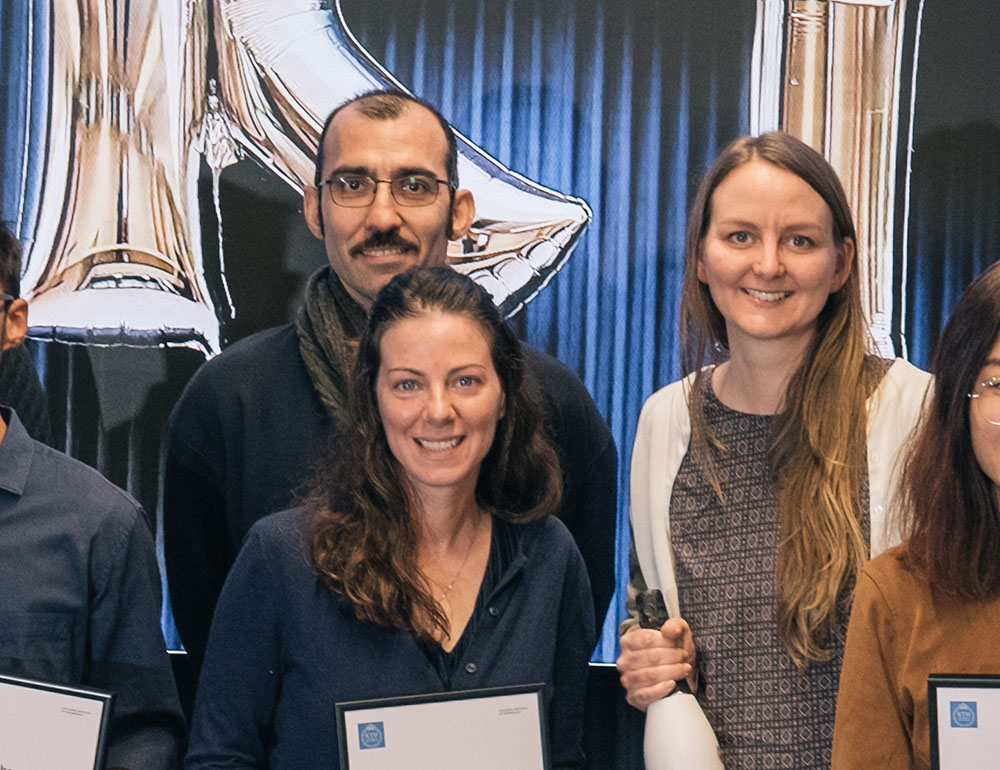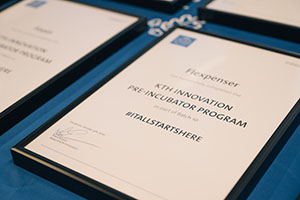Flexpenser wants to end the waste of liquids

Bad packaging means millions of tons of liquids is thrown away every year. KTH researcher Amin Kazemzadeh came up with a solution to end liquid waste – a 400 billion dollar market. Meet the Flexpenser team, one of the recent graduates from the KTH Innovation pre-incubator program.
- When I was a PhD student, my supervisor Marc Madou, Chancellor's Professor of University of California Irvine asked us students to come up with a solution for storage and dispensing of liquids in microchips, which according to him was the main problem towards commercialization of lab on a chip and point of care devices, says founder Amin Kazemzadeh. I finished my PhD without having found the answer, but when I was in the gap between my PhD and starting here at KTH I came up with a solution that is the core technology of Flexpenser.
Woke up to a solution
Amin Kazemzadeh was a researcher at the KTH School of Engineering Sciences in Chemistry, Biotechnology and Health (CBH). Together with Giulia Gaudenzi and Sara Jonegård, they form the Flexpenser team, now working on bringing the innovation to the market. But it wasn’t until several years after the supervisor posed that question that Amin Kazemzadeh came up with his answer.
- I had completely forgotten about the problem, but one day I woke up with it stuck in my mind, says Amin Kazemzadeh. I got a bit annoyed, because it was so hard to solve. I discarded it as impossible, but next morning the problem was back on my mind again. On the third day of this happening, I just saw the solution in my mind. I was completely sure it would work.
700 million tons of waste
From food to cosmetics, paint and glue, most liquids start to deteriorate as soon as you break the seal on the packaging. The idea Amin Kazemzadeh came up with is simple: the solution is to cover the hole on the container with an elastic membrane that releases liquid only when pressure is applied. It is self-resealing, multi-use and airtight, making it suitable for all sort of liquids and semi-solids. By preventing contaminants from entering the packaging, the technology also removes the need for preservatives and makes products last longer without spoiling.
- Every year, 700 million tons of liquids are wasted, says Giulia Gaudenzi. Expired products are often recklessly emptied down the sink, where they can pollute our groundwater, and products like glue that dry in the container also has a large negative environmental footprint. The problem is huge.
The team behind the innovation
Amin Kazemzadeh brought his idea with him from Tehran to Stockholm, where he first came in contact with KTH Innovation in September 2017. Since then, the technology, the business and the team has grown.
Being a graduate from the Stockholm School of Economics, Sara Jonegård brings a business perspective to the team, although she says that now they complete most tasks together. She joined Flexpenser in May 2020, at the same time as the third member of the team, Giulia Gaudenzi. Giulia Gaudenzi has a background in medical science from Karolinska Institute and is now a post-doctoral fellow at KTH, where she focuses on low-cost point-of-care diagnostics for global health applications.
- Amin and I were working in the same lab at SciLifeLab. Normally, I would have been doing fieldwork in East Africa, but because of the COVID pandemic, I was working remotely with my research. We started talking and had lots of great discussions and ideas, and after a while, he asked if I wanted to join Flexpenser.
An encouraging environment

In the KTH Innovation pre-incubator program, Flexpenser became one of 14 teams working towards developing their ideas as far as possible in one year. In this creative community, students, researchers and employees from KTH work together, butting heads and helping each other move forward.
- That our startup is research-based meant that sometimes our challenges were different from the other teams’, but this also made us unique, says Amin Kazemzadeh. It’s hard to be alone on this journey and the program gave us an encouraging environment.
Together with the other 12 teams that finished the program, Flexpenser graduated in the fall of 2020. Throughout their journey, they have gotten support from their Business Development Coach Gustav Notander.
- Gustav has been very supportive, says Amin. In the beginning, I was very new at this and we talked a lot about how to start and how to build the company. Slowly, as I learned more, this changed to more advanced business development support, as well as helping with negotiations and reviewing contracts.
Signed their first customer
In January 2021, Flexpenser signed their first customer, an international company leading in household products. In the future, Flexpenser aims to become the first choice for the customers.
- For us it’s important to do things a bit differently, says Giulia Gaudenzi. We pride to work with sustainability andbe respectful of work ethics and to be a good company.
Sara finishes:
- We want to have positive impact in the world. If we’re a good business partner, everyone wins. If you want to know more about Flexpenser, or if you’re in the packaging industry, contact us!
Text: Lisa Bäckman

